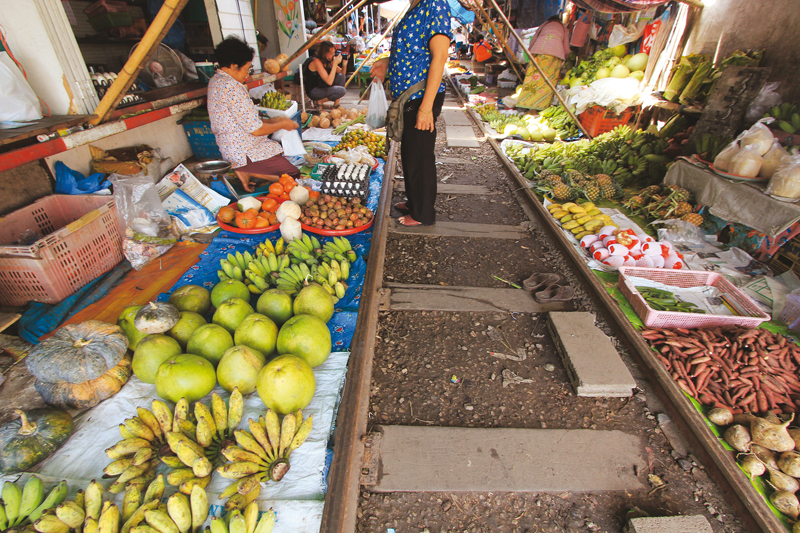

Stalls cover the railway track which is used as a footpath for visitors. PHOTO: DANIAL SHAH

The market resumes its usual hustle-bustle once the train has passed. PHOTO: DANIAL SHAH
While it looks like any other open-air market in Asia — busy with a variety of produce and haggling customers — unlike other markets, passenger trains pass through it eight times a day, every day of the week. Even though there is a margin of almost eight inches of safety between the railway track and the vendors along with signals by guards to ensure that the track is cleared when the train passes, some travelers have reported accidents on their personal blogs.

A vendor safeguards her stall and holds an umbrella for the train to pass through. PHOTO : DANIAL SHAH

Vibrant colours and aromatic alleys make the market a major tourist attraction. PHOTO : DANIAL SHAH
Shop vendors wait for the piercing sound of the signal and within a minute, the entire market is moved back from the rails. This distinctive feature has made the market a major tourist attraction. Their cameras at bay, tourists wait for the trains as vendors slide their carts back. Some vendors even install wheels on their carts for easy manoeuvring. The awnings are lifted up out of the way of the train, the goods and tables are retracted, and people stand just centimeters from the passing carriages.

Vendors have a minute or two to move the entire market back from the track before the train comes through. PHOTO: DANIAL SHAH
Within seconds of the train passing, the goods are back on the track, the awnings are down and business resumes as usual.

Danial Shah is a travel writer and a photographer. He tweets @DanialShah_
Published in The Express Tribune, Sunday Magazine, January 18th, 2015.

1730959638-0/trump-(19)1730959638-0-165x106.webp)















COMMENTS
Comments are moderated and generally will be posted if they are on-topic and not abusive.
For more information, please see our Comments FAQ